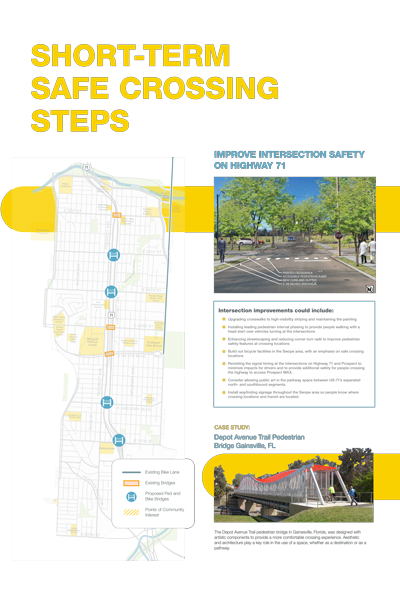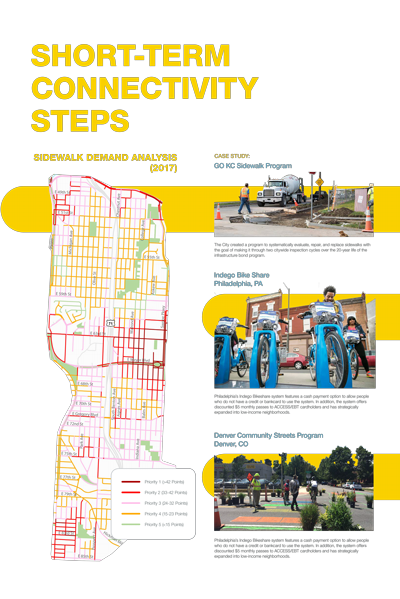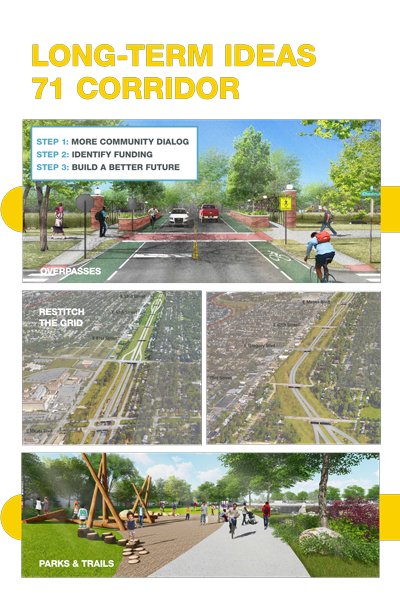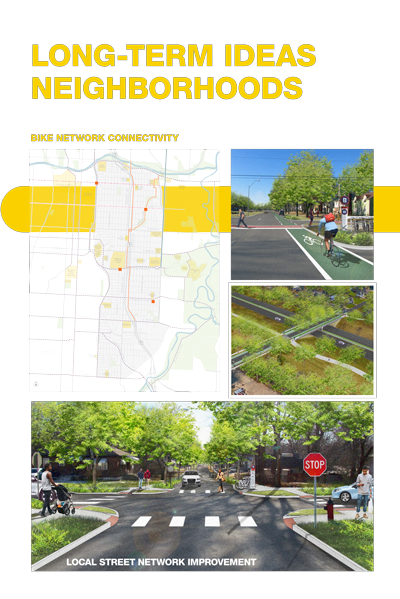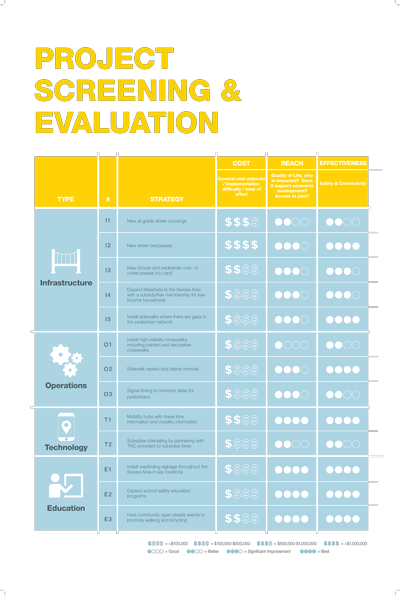Connecting Swope Study Nears Completion
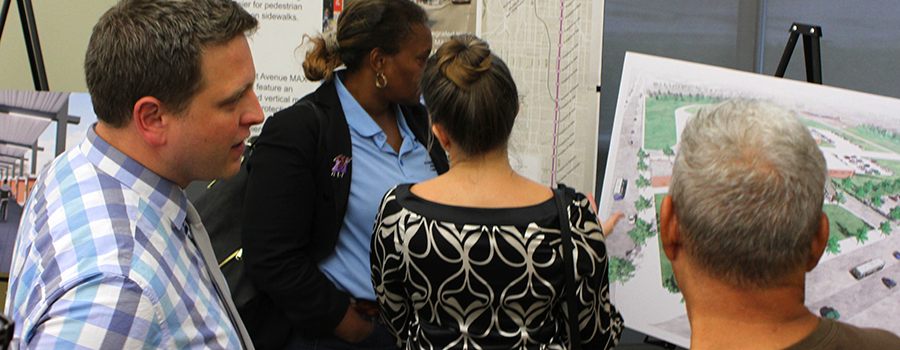
On July 17, KCATA held a public meeting in support of the Connecting Swope study. The meeting was held in partnership with MoDOT, the City of Kansas City, and the Mid-America Regional Council (MARC). This study is focused on improving pedestrian safety around Highway 71 in South Kansas City.
The highway presents a major barrier for people walking and bicycling in the surrounding neighborhoods. It also limits access to transit and other services in the area, including Prospect MAX which will start service in late 2019.
Despite heavy rain, the meeting was attended by more than 30 people, representing neighborhoods, business groups, transit riders, and other stakeholders in the project area. A brief presentation provided an overview of the planning process and the data and input that had been previously collected. The data included an assessment of the number and locations of crashes and fatalities involving pedestrians and cyclists along the highway. A community survey was also conducted to gather additional feedback.
The presentation noted the many short-term and long-term options that were considered for further review. These options were evaluated based on the cost, the impact, and effectiveness of each option. The options range from improving crosswalks at existing crossings to adding new overpasses over the highway. Alternatives included:
- infrastructure improvements
- operational improvements, such as signal timing
- technology, such as real-time information signage
- education programs, such as wayfinding signage
This process led to the recommendation of high priority projects that include intersection safety improvements like:
- high-visibility striping and signal improvements
- the expansion of mobility hubs that facilitate access and transfers to and from transit services
- fixing gaps in the sidewalk network
- and adding bicycle lanes on key corridors in the area
The presentation ended with a bold and long-term idea to “restitch the grid” by shifting travel lanes on Highway 71 to allow for the elimination of existing at-grade crossings and the addition of new overpasses across the highway, reconnecting the street network to improve access and safety. This is a long-term solution that would come at significant cost, but it is being recognized by the study as the solution that would improve pedestrian safety the most. In addition, the plan recommends new off-street trail segments to better connect parks and other destinations in the area.
In addition to the presentation, boards around the room included renderings and recommendations for these projects. Staff and consultants at each of these boards provided additional information and answered questions. The project team received valuable feedback that will be used to complete the final plan document in August.
Presentation and boards from the meeting
Powerpoint presentation. [5 MB, PDF]
Click each image to view a PDF.
